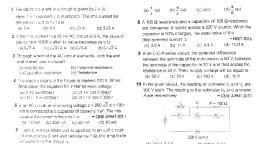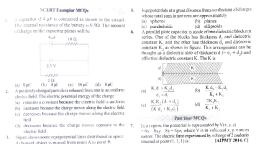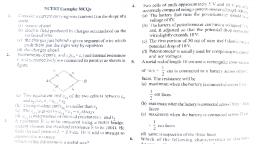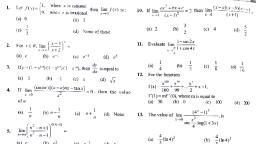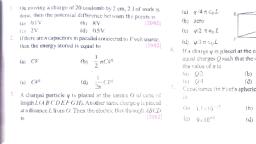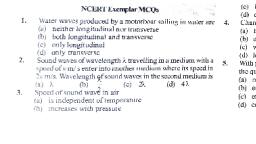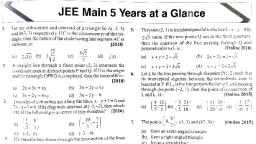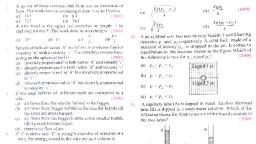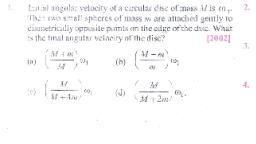Question Text
Question 1 :
If specific resistance of a wire is ρ, its volume is 3m<sup>3</sup> and its resistance is 3 omhs, then its length will be
Question 2 :
A charge +<em>q</em> is fixed at each of the points <em>x</em> = <em>x</em><sub>0</sub>, <em>x</em> = 3<em>x</em><sub>0</sub>, <em>x</em> = 5<em>x</em><sub>0</sub> ….. <font face="Symbol">∞</font> on the <em>x</em>-axis and a charge –<em>q</em> is fixed at each of the points <em>x</em> = 2<em>x</em><sub>0</sub>, <em>x</em> = 4<em>x</em><sub>0</sub>, <em>x</em> = 6<em>x</em><sub>0</sub> …… <font face="Symbol">∞</font>. Here, <em>x</em><sub>0</sub> is a positive constant. Take the electric potential at a point due to charge <em>Q</em> at a distance <em>r</em> from it to be <em>Q</em>/4πε<sub>0</sub><em>r</em>. Then the potential at the origin due to the above system of charges is
Question 3 :
The electric potential at a point (<em>x</em>, <em>y</em>) is given by: <em>V</em> = –<em>Kxy</em>. The electric field intensity at a distance <em>r</em> from the origin varies as
Question 4 :
There are two charges +1 <font face="Symbol">µ</font>C and +5 <font face="Symbol">µ</font>C. The ratio of the forces acting on them will be
Question 5 :
A particle <em>A</em> has charge +<em>q</em> and a particle <em>B</em> has charge +4<em>q</em> with each of them having the same mass <em>m</em>. When allowed to fall from rest through the same electric potential difference, the ratio of their speed {tex}\frac{v_{A}}{v_{B}}{/tex} will become

